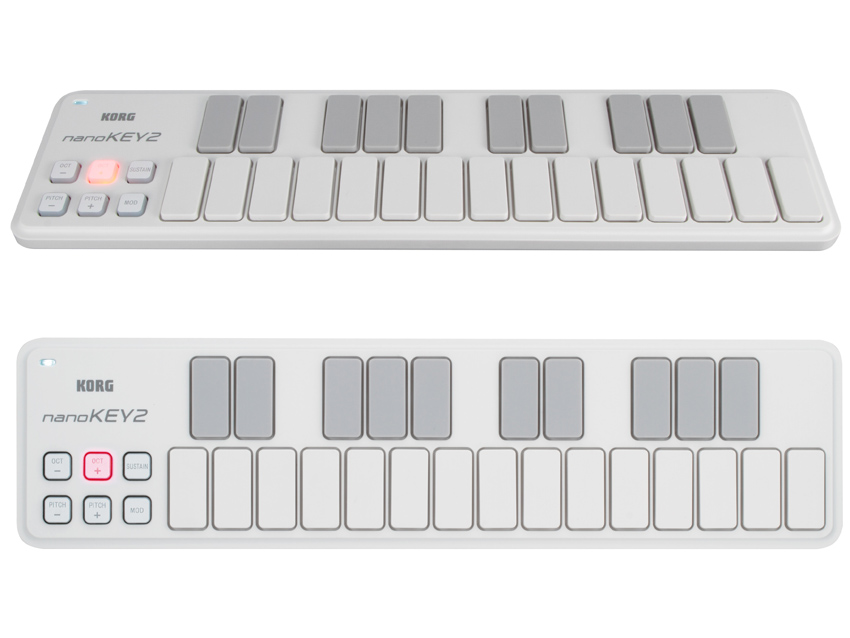MusicRadar Verdict
The new hardware looks and feels better, though some may be disappointed that certain features have been left behind.
Pros
- +
Improved design and build. Notably better feel. Highly affordable.
Cons
- -
Still a little awkward. Some functionality lost from first series.
MusicRadar's got your back
Korg's original nanoSeries kickstarted the super-compact MIDI controller concept in late 2008, and competitor Akai responded with their slimline LPD8 and LPK25 units.
Korg now returns fire with the nanoSeries 2, which comprises three units. All are USB-powered class-compliant MIDI devices, meaning that you just plug them in and off you go - no need for drivers or external power supplies.
"Fans of the first nanoSeries might be annoyed that certain features have been ditched to make way for new one."
A sleeker and more rounded-out design makes the devices easier on the eye and in-keeping with the current trend for softer aesthetics.
Key to improvement
The big disappointment of the original nanoSeries was the nanoKey keyboard, which was let down severely by poor-feeling keys and a suboptimal layout. The 25 laptop keyboard-style keys are still here, complete with their uniform size/spacing, but their feel has been considerably improved.
As before, the action is really light, and it takes a little getting used to if you're accustomed to playing on a traditional keyboard.
One big problem with the original nanoKey was that the velocity response varied wildly if you didn't hit each key dead-centre, but there's none of that with the new version, and it's a lot more playable for it. The keys don't 'stick' against the edge of the casing, either. Overall, it feels way better.
The controls are much the same as before, but note that the old nanoKey's CC Mode - which let you use keys to send CCs - has been ditched.
Want all the hottest music and gear news, reviews, deals, features and more, direct to your inbox? Sign up here.
There are backlit buttons for octave switching, with the colour indicating the current octave. The unit features a sustain button (this is new), while the modulation and pitchbend up/down buttons work in momentary fashion, eg, ramping the pitch up while you hold the button down.
The mod and sustain keys on the original model were flush to the lowest key of the keyboard, leading to accidental triggering if you weren't careful, but a few millimetres of plastic casing now separate them, which helps.
While it may be easy to pick at the form of the keys themselves, these devices were never designed with concerto-style performance in mind. They're all about making music on the move or saving precious desk real estate, and the nanoKey 2 fulfils this role well.
Editor's choice
The full feature-set of the original nanoSeries could only be accessed via the Kontrol Editor software, and this is still the case. There are a few changes for the new devices, though. The absence of the CC Mode means there's now less to configure with the nanoKey.
It's still worth getting the editor, though, because you can set things like velocity curve and timing of buttons for pitch, mod, etc.
Some decent new functionality and a gentle makeover sees the nanoSeries heading in the right direction, especially this much improved nanoKey. However, fans of the first nanoSeries might be annoyed that certain features have been ditched to make way for new ones, rather than the existing feature-set being expanded.
Computer Music magazine is the world’s best selling publication dedicated solely to making great music with your Mac or PC computer. Each issue it brings its lucky readers the best in cutting-edge tutorials, need-to-know, expert software reviews and even all the tools you actually need to make great music today, courtesy of our legendary CM Plugin Suite.

